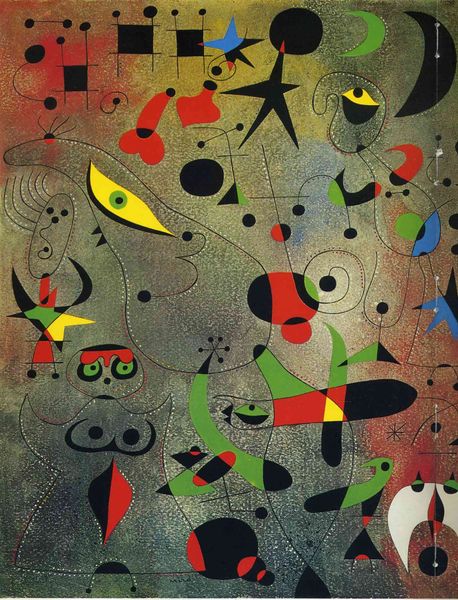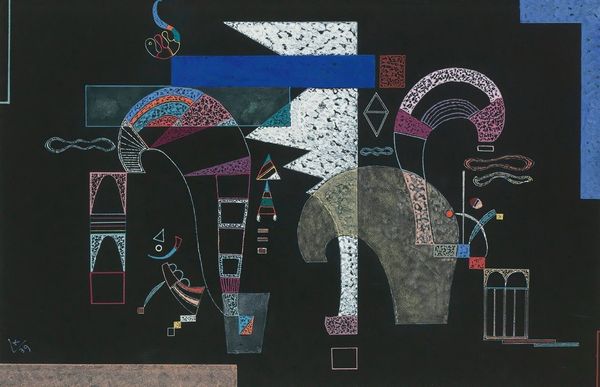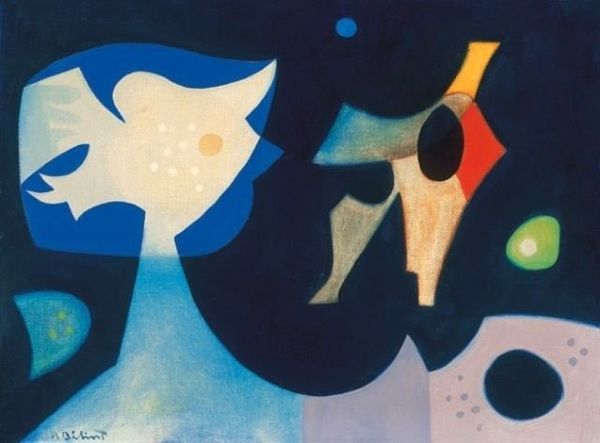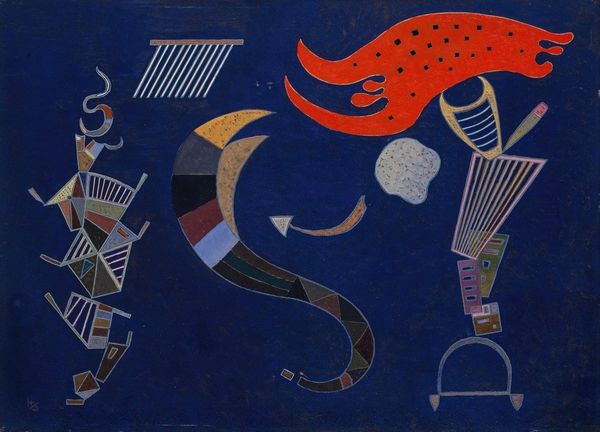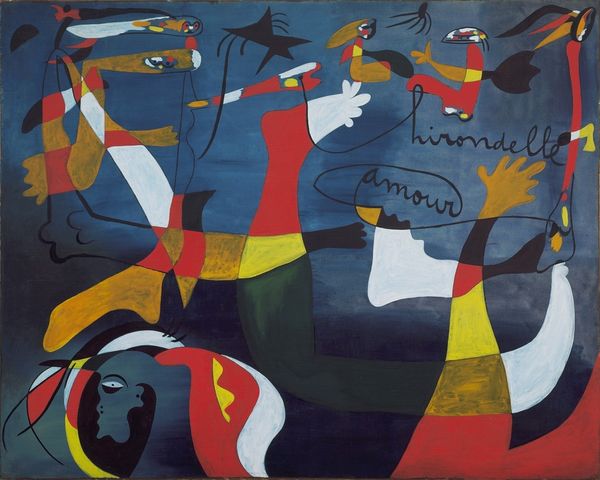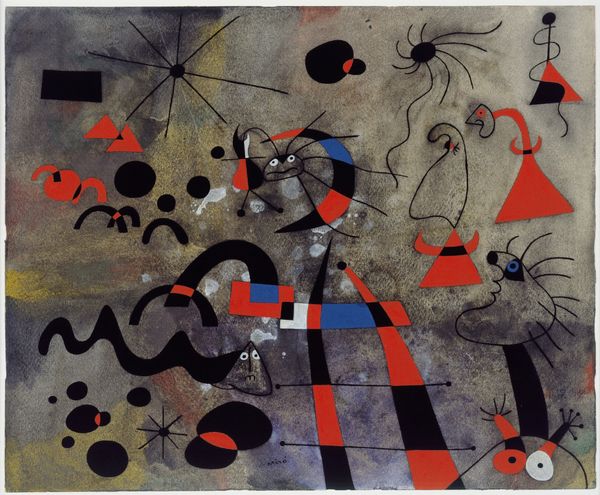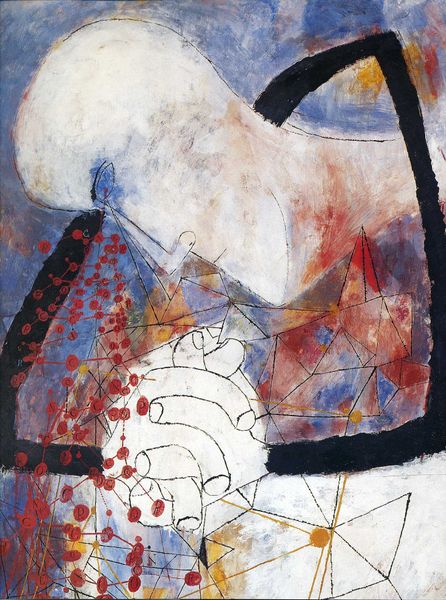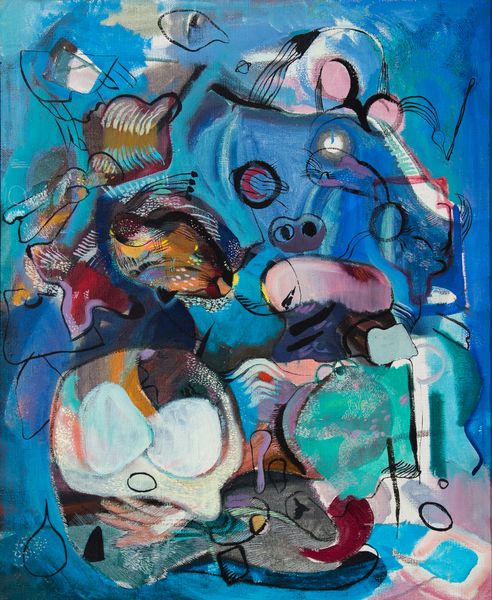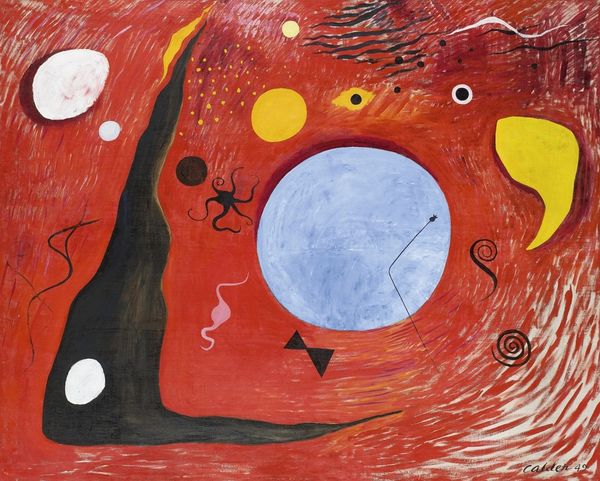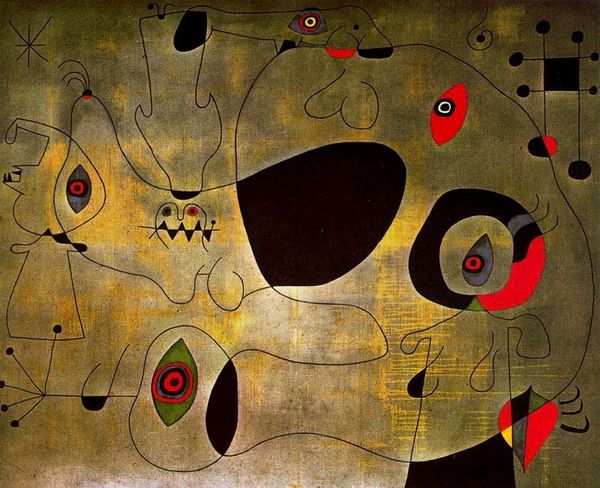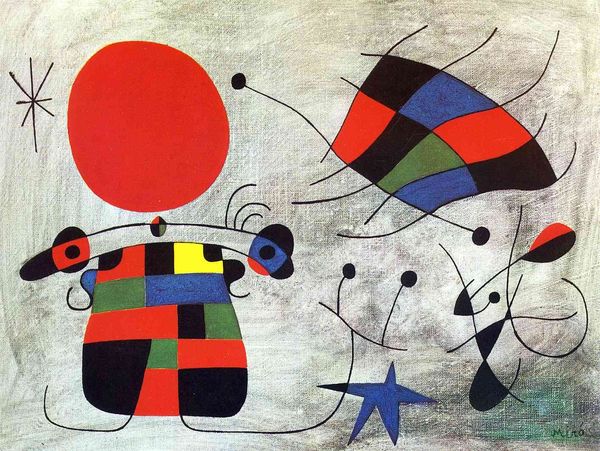
mixed-media, painting
#
mixed-media
#
organic
#
painting
#
abstract
#
geometric
#
art-informel
#
surrealism
Copyright: Modern Artists: Artvee
Curator: Immediately, the light, almost airy, blue is punctuated by these stark, geometric shapes. Editor: We're looking at Joan Miró's "Constellations #1" from 1959. It’s a mixed-media work reflecting the Art Informel movement that moved away from pure abstraction toward the lyrical. The making of "Constellations #1", I think, sheds light on postwar creative labor practices. It sits within a body of works Miró began after being stuck in Normandy when the Nazis invaded Paris. He was grappling with themes of refuge and uncertainty during World War II, as well as its aftermath. Curator: Absolutely. And look at how the limited color palette of red, black, and the spattering of blues is rendered against the background: It gives it the appearance of something primal, an artifact recovered. There's this sense of discovery that, at least for me, is extremely visceral. How do you interpret the presence of geometry within this seemingly boundless visual field? Editor: I think the key is in its process: Miró often used collage as a generative method, leading to surprising juxtapositions. When you analyze how the shapes and patterns engage with the support itself—probably a kind of industrial paper —it points to an interrogation of conventional materials, breaking down established boundaries. In what manner are "high" artistic concerns dependent upon, interwoven, or implicated by “lower,” commercial forms? Curator: That's astute, noting its connection to collage! Indeed, if you analyze his mark-making alongside how geometric figures emerge, you could consider how the contrast between carefully controlled versus almost casual application techniques reinforces those underlying themes present in its form. Also how he presents scale is intriguing; while compact, it delivers visual cues suggesting infinity or microscopic life forms, maybe blurring outer and inner reality. Editor: Exactly, its scale belies its ambitious themes. One is forced to acknowledge labor practices and material processes inextricably entwined. We have not merely an ethereal rendering, but also very real concerns relevant during the period, post-war in specific detail: refugee crises, global concerns such as the burgeoning commercialist cultural complex.... It suggests anxieties of postwar modernity itself made manifest! Curator: The biomorphic abstraction certainly taps into raw emotive qualities with deceptively playful symbols that mask existential angst felt. This invites introspection on personal/collective unconscious level rather just appreciating skill shown in creating forms! Editor: Indeed. And in focusing on the materiality itself reveals broader socio-economic systems that both empowered artist's vision, while also, inevitably shaping it.
Comments
No comments
Be the first to comment and join the conversation on the ultimate creative platform.
